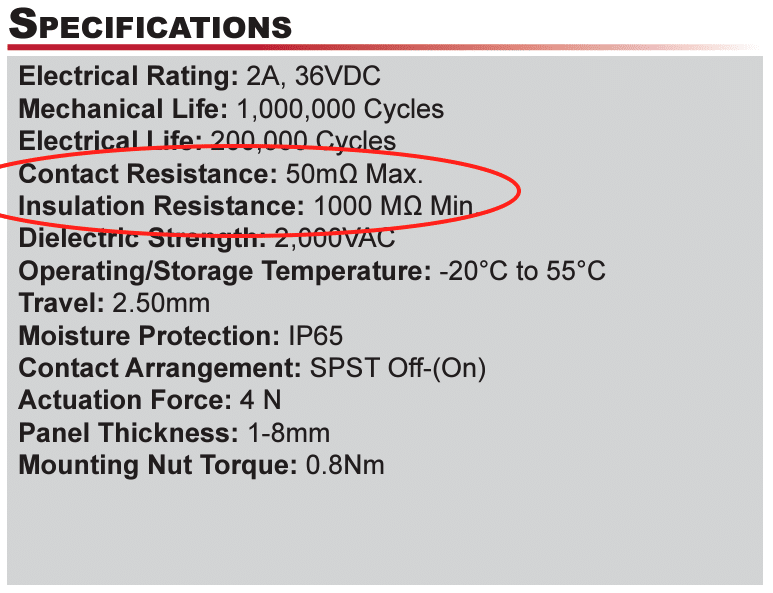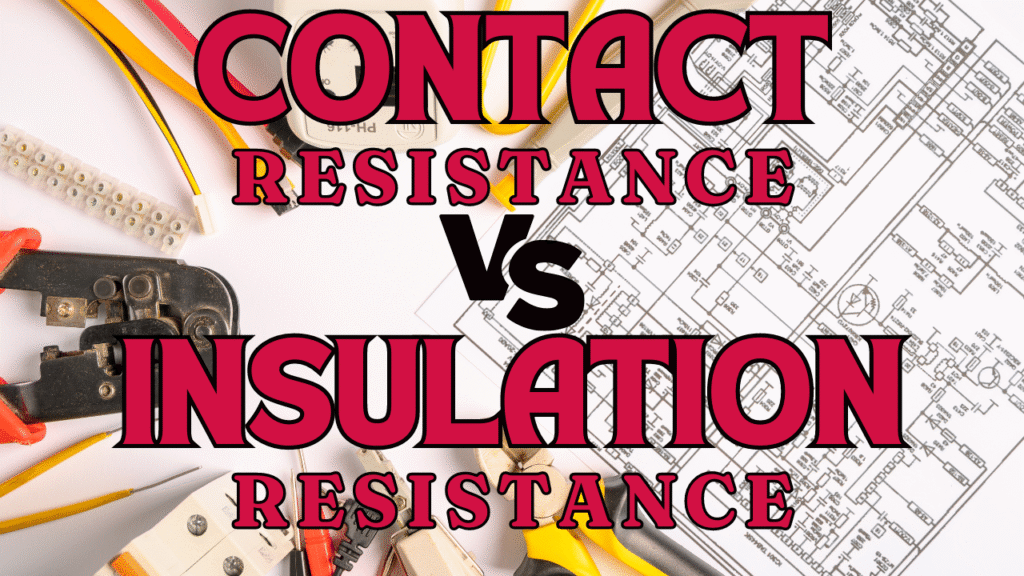If you’re looking at an electromechanical switch data sheet, you’ll quickly encounter specifications for the switch’s contact resistance and insulation resistance. But what do these terms mean and what’s the difference between the two?

What is Contact Resistance?
Contacts connect the flow of electricity between multiple devices. They can be found on switches, breakers, relays and much more. Contact resistance is the amount of resistance to the flow of electricity from one contact to another.
The amount of resistance could vary depending on the surface conditions of the contacts, such as the impact of dirt, dust or corrosion. Low contact resistance is crucial for efficient electrical connections.
As an example, imagine water flowing through a funnel. The water is the electrical current while the funnel represents the contacts. If we add another obstacle to the funnel, the flow of water has more resistance and slows down. If we add too many obstacle, the water will start to overflow.
Poorly maintained or damaged contacts could lead to arching. This is when a circuit becomes overloaded and the electrical current flows through the air from one conductive point to another. This could result in fire or an electric shock.
It’s important to know contact resistance in order to maintain contacts and ensure proper use, especially when it comes to high current loads. For example, the contacts in your home circuit breaker should be checked periodically to ensure they’re functioning properly.
What is Insulation Resistance?
It’s the resistance to current flow of the insulating materials between contacts. This term applies to the measured value in Ohms of an insulating material surrounding electrical conductors, such as the contacts of a switch. High insulation resistance is essential to prevent leakage currents and short circuits. It ensures that electrical components are properly isolated from each other.
Electric current can flow either directly through the surrounding insulator material or around its surface. The amount of current flow will depend on the magnitude and the nature of the voltages being used. The higher the voltage, the more challenging it will be to provide adequate insulation between conductors and any other surrounding objects where the current flow from the conductor is not wanted.
Excessive unwanted current flow from the conductor via the insulator can cause many problems, such as short circuits, flash arcing, overheating, fire and electrocution. Therefore, being able to test insulation resistance is crucial in ensuring that you maintain a safe environment in all types of settings where electrical equipment is used.
Ohm’s law states that the voltage across a conductor is directly proportional to the current flowing through it if physical conditions and temperatures remain the same. In the equation, Resistance is “R” and has units of Ohms, with the symbol Ω.
The value of insulation resistance measured is important. The minimum acceptable value for most applications is to have more than 1 megohm (million Ohms) for every 1,000 volts of the intended operating voltage.
Contact Resistance vs. Insulation Resistance: What’s the Difference?
Contact resistance and insulation resistance are two important electrical properties, but they serve different purposes. Contact resistance is about ensuring good electrical connections, while insulation resistance is about preventing unwanted electrical paths. Both are critical for the safe and efficient operation of electrical systems.

